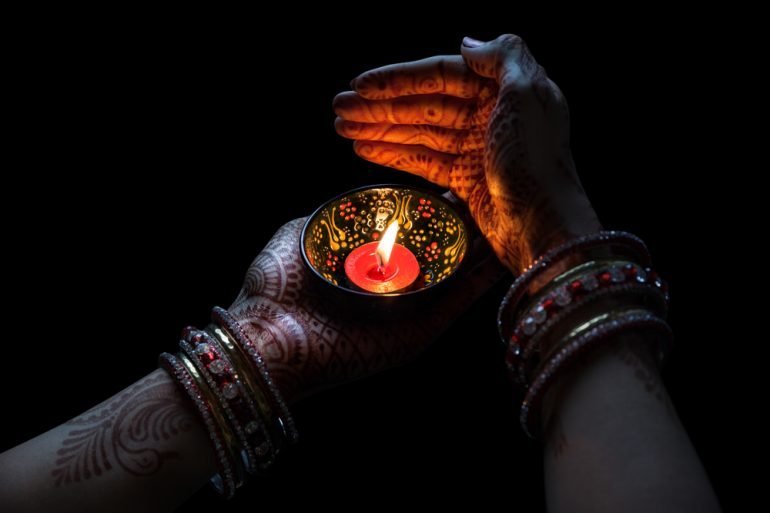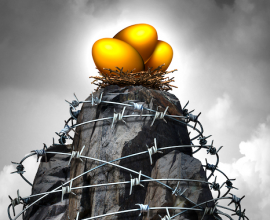Deepavali – the facts, history and legends behind it
Have you ever wondered – as a Malaysian – what Deepavali really stands for?
Deepavali represents the brilliance and abundance of life.
It is a day of thanksgiving.
Timing
Deepavali (or ‘Diwali’ as it is known in Northern India), falls during the autumnal month of the Hindu calendar ‘Ashwayuja’, (also known as ‘Ashwin’ or ‘Aippasi’). It falls between either October or November; and its exact date depends on the relative position of the sun and the moon in the heavens.
Deepavali is said to have originated as a harvest festival. This is because Deepavali usually falls at the end of the harvest season.
Sanskrit meaning
In Sanskrit, ‘Deepavali’ means ‘a row of lights’.
Origins
The origins of Deepavali are steeped in mystery.
Principal Hindu scriptures make no mention of Deepavali. The first reference to it is found in the Jain scripture, Harivamsha Purana (AD 783).
Scholars point to this Purana to conclude that Deepavali was originally a Jain festival; and that Hindus later adopted it as a festival of their own.
References to the festival are found in ancient texts: the Padma and Skanda Puranas. A Sanskrit play, Nagananda composed during the time of Harsha (7th century), states how Deepavali was celebrated with lamps, and how newly-married couples received gifts on that occasion.
Another scripture, Kavyamimansa, composed during the 9th century, suggests how homes were whitewashed and decorated with lamps.
Al Beruni, the Persian historian who visited India in the 11th century, mentions that Hindus celebrated Deepavali on New Moon day in the month of Kartika.
Legends
The festival is also associated with several ancient legends: the ascent of Nachiketa to the heaven, the victory of Rama over Ravana, and his return to ascend the throne at Ayodhya; the return of the Pandavas from exile, and the victory of Lord Krishna over the demon Narakasura.
There is a widely-held belief among Hindus that on Deepavali day, the goddess of wealth Luxshmie visits her devotees.
Luxshmie represents universal health, wealth, happiness, victory, courage, facility, fertility, harmony, beauty, joy and enlightenment. And she will go away from unclean and dark homes.
That might – to some extent – explain the frenzy of cleaning and lamp-lighting!
The historical significance of Deepavali to the Sikh Community
Malaysia has a sizeable Sikh community.
They also celebrate Deepavali. This seems to be attached to historical reasons.
The first concerns the belief that the foundation stone for the Golden Temple had been laid at or about the time of the Deepavali celebration of 1577.
Second, Deepavali seems to have played a significant role in the life of the sixth Guru of the Sikhs, Sri Guru Hargobind Ji. Guru Hargobind had the longest tenure as Guru, lasting 37 years.
He was the only son of Guru Arjan, the fifth Sikh Guru. Guru Arjan appointed Hargobind as his successor in mid-1606. Guru Hargobind was then 11 years of age. He instructed his son to start a military tradition to protect the Sikhs. Shortly afterwards, Guru Arjan was arrested, tortured and killed on the orders of the Mughal Emperor, Jahangir.
Guru Hargobind militarised Sikhism.
He symbolised Sikh martial life as a dual concept. He demonstrated it by wearing two swords. They were named ‘miri’ and ‘piri’. The one represented temporal power; the other, spiritual authority.
Before the Harmandir Sahib in Amritsar, Guru Hargobind constructed the Akal Takht (‘the throne of the timeless one’). It was a court for the consideration of temporal issues and the administration of justice. The Akal Takht represents the highest seat of earthly authority of the Khalsa (the collective body of the Sikhs) today.
In 1609, Jahangir cast Guru Hargobind in the Gwalior prison. It was on the pretext that a fine imposed on his father Guru Arjan had not been paid by the Sikhs, or Guru Hargobind.
The guru was possibly 14 at that time.
Gloom descended upon Sikhs.
Eventually, Jehangir relented. He freed the Guru. Guru Hargobind was possibly 16 at that time.
Accompanied by his followers, Guru Hargobind returned to Amritsar, and there granted an audience to his believers.
That occasion fell on Deepavali. The reminiscence of Guru Hargobind’s release has, over the centuries, recalled the Sikhs to celebrate the Deepavali day with joy.
The Indian Diaspora
Over the last millennia the Indian diaspore has permeated the entire globe.
They took their traditions everywhere they went.
In strange lands, confronted by strange peoples and customs, the diaspora held on to their traditions.
Their religion and tradition gave them a creed and an identity.
And it came to pass that the diaspora took the celebration of Deepavali to all corners of the world:
So much so that there is an old saying:
‘the Indian diaspora are ‘more Indian’ than the Indians of the subcontinent’.
Yet, Deepavali is not a mere festival of lights
Deepavali is not a time where wealth is worshipped.
Nor is it a time for Hindus to indulge in vanity and ostentation.
A Vedic hymn states ‘tama soma jyotir gamaya.’ Translated, it means ‘From darkness unto Light’.
The contextual direction of the hymn points to one’s divine nature.
It reminds one of one’s primary duty in life is to pursue the path of light, and finally, to attain liberation.
And so a tradition grew:
Deepavali became a festival of worship of the divine by the display of lights.
And so Deepavali came to symbolise the triumph of light over darkness, of good over evil.
That theme cuts across every religion, every faith, every goodly race, and every creed.
We celebrate light because it represents life
It is a sacred opportunity to bring cheer to a world oppressed by the darkness of ignorance, racism, religious bigotry, greed, vanity and selfishness.
Let us therefore celebrate Deepavali as a happy, auspicious occasion.
Happy Deepavali, dear brothers and sisters:
whosoever you are,
wherever you are,
whatsoever your creed.
May you have good health, divine protection, divine guidance and munificence be showered upon you all the days of your life: and may the same salubrious circumstance envelop your loved ones.
Note:
[The contents of this article are derived from an article written by Mr. Jayaram V at the site www.Hinduwebsite.com].





